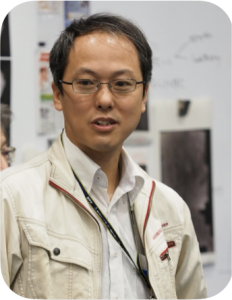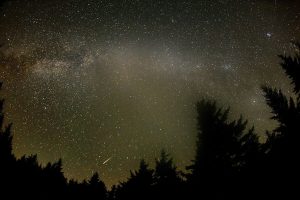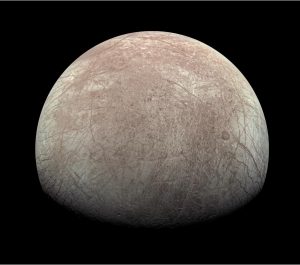
Global Space News: Asteroid Itokawa hints at an additional source for the Earth’s oceans
All life on Earth requires water, making the oceans that stretch across roughly 71% of our planet’s surface an essential component to our home world’s habitability. The mechanism by which the Earth acquired water is therefore key to understanding how habitability can develop on a planet.
Missions such as Hayabusa2 and the up-coming Martian Moons eXploration (MMX) mission are dedicated to mapping how ices may have been transported from their formation in cold outer Solar System to the temperate orbits of the terrestrial planets. This delivery system would consist of asteroids and comets striking the young Earth and offloading their watery burden onto our planet.
Now, an additional source of water has been suggested that is created by the stream of particles of hydrogen from the Sun known as the solar wind. In a paper published in Nature Astronomy last year, it was reported that water was produced when the solar wind strikes dust grains. Evidence for this process was found in the sample from asteroid Itokawa, collected and returned to Earth by the first Hayabusa mission in 2010. The result not only offers a new delivery mechanism for water reaching a rocky planet, but also underscores the value of sample return missions.
For Professor Usui Tomohiro, who oversees the Astromaterials Science Research Group at JAXA that is charge of curating the samples from the Hayabusa missions and MMX on the spacecraft’s return to Earth, the possibility of different options for a planet’s water is an intriguing twist on our understanding of habitability.
Recent space exploration and astronomical observations have shown that water/ice is “surprisingly” present everywhere in the Solar System. This gives us a new fundamental question: “Which” water/ice could be the source of Earth’s ocean? This paper proposes an intriguing idea by studying the Hayabusa sample that the solar wind could be an alternate possibility for the origin of Earth’s water. I really look forward to follow-up results
Usui Tomohiro, Professor, Department of Solar System Sciences
Dr Nakauchi Yuusuke, who is part of the up-coming SLIM (Smart Lander for Investigating the Moon) mission, has led related research looking at the production of water on the lunar surface through interaction with the solar wind. He feels this mechanism for water generation has potential not just in explaining the origin of the habitable environment on Earth, but the possibility of a water supply on the Moon that could be utilised by future crewed missions.
In recent years, the production of water by the solar wind has become a topic of active research. Explaining the generation of H2O from both analysis of the returned sample and through experiment is unique and highly technical which makes this a very interesting study.
Nakauchi Yuusuke, SLIM Project Researcher
I would particularly like to focus on the result that “water (OH and H2O) was generated in anhydrous silicate minerals” by the solar wind. Anhydrous silicate minerals (for example, olivine and pyroxene) which are the focus of this study, are widely present on the rocky planets of the Solar System, and of course, the Moon!
Many research results from lunar exploration have confirmed the existence of water on the Moon, shifting the debate to “where and how much water”. Results from observations of the lunar surface also suggest the existence of “water (OH and/or H2O) generated by the solar wind”. Therefore this research result that “water (OH and H2O) was generated by the solar wind on Itokawa” is likely to be a very important piece of the puzzle to interpret the origin of lunar water.
Just imagining the possible breakthroughs and discussion from the samples from both Hayabusa and Hayabusa2 for the origin of the water on both the Earth and Moon leaves me smiling in anticipation ♪
The fact that this discovery was made with the sample from Itokawa is of particular interest to Professor Tsuda Yuichi, Project Manager of the Hayabusa2 Mission. Itokawa is an S-type (stony) asteroid, which is thought to have undergone significant changes since the start of the Solar System. By contrast, the destination of Hayabusa2 was the C-type asteroid, Ryugu. Ryugu is believed to be a pristine sample whose composition reflects the material present in the Solar System during the formation of the Earth. Together, the asteroids provide clues as to how Solar System materials formed and evolved.
An interesting result from the Itokawa sample! This is particularly exciting, as the findings seem to relate to what we are discovering now with the Ryugu sample. With a sample return mission, the sample continues to give scientific results even after the mission ends. This is why we can make new discoveries even 11 years later. The greatest appeal of sample return is the knowledge provided to future generations.
Tsuda Yuichi, Hayabusa2 Project Manager
Overall, this research adds a fascinating piece to the jigsaw of discovering how planets may receive water. The answer could be a mix of sources, from a range of icy rocks scattered inwards from the outer Solar System, to a mechanism provided by the star itself.
Professor Tachibana Shogo, Initial Analysis Team Manager for the Hayabusa2 sample, sums up the situation with help from Bob Dylan,
The Sun hands rocky asteroids hydrogen.
Tachibana Shogo, Specially Appointed Professor, Astromaterials Science Research Group
Where did our ocean come from?
The answer is blowing in the wind.
“Global space news” is a chance for us to highlight important developments across the world and share our excitement of these achievements.
Special thanks to Dr Kate Kitagawa for sharing this news story with us.
Further information:
“Solar wind contributions to Earth’s oceans”, Nature 2021
Hayabusa2 Mission
Martian Moons eXploration Mission
Creating water simply on the surface of a celestial body (ISAS press release)




 Previous Post
Previous Post Next Post
Next Post






